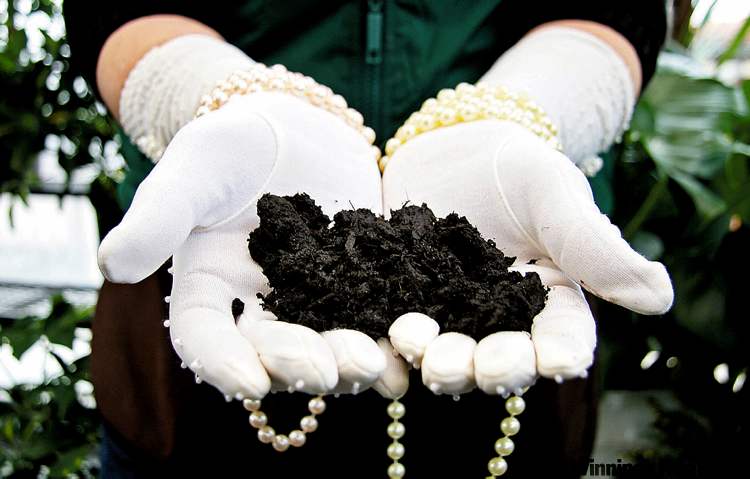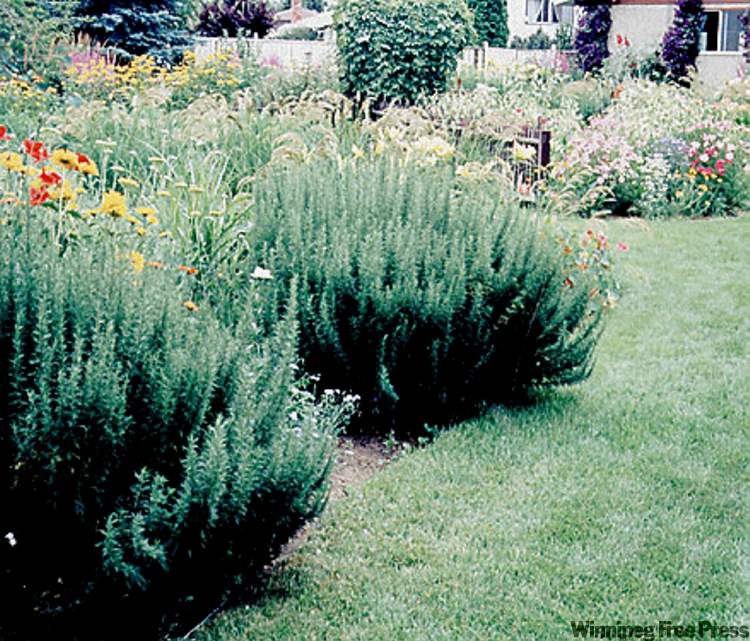Top dressing will help sow healthier lawn
Advertisement
Read this article for free:
or
Already have an account? Log in here »
To continue reading, please subscribe:
Monthly Digital Subscription
$1 per week for 24 weeks*
- Enjoy unlimited reading on winnipegfreepress.com
- Read the E-Edition, our digital replica newspaper
- Access News Break, our award-winning app
- Play interactive puzzles
*Billed as $4.00 plus GST every four weeks. After 24 weeks, price increases to the regular rate of $19.00 plus GST every four weeks. Offer available to new and qualified returning subscribers only. Cancel any time.
Monthly Digital Subscription
$4.75/week*
- Enjoy unlimited reading on winnipegfreepress.com
- Read the E-Edition, our digital replica newspaper
- Access News Break, our award-winning app
- Play interactive puzzles
*Billed as $19 plus GST every four weeks. Cancel any time.
To continue reading, please subscribe:
Add Free Press access to your Brandon Sun subscription for only an additional
$1 for the first 4 weeks*
*Your next subscription payment will increase by $1.00 and you will be charged $16.99 plus GST for four weeks. After four weeks, your payment will increase to $23.99 plus GST every four weeks.
Read unlimited articles for free today:
or
Already have an account? Log in here »
Hey there, time traveller!
This article was published 03/07/2010 (5594 days ago), so information in it may no longer be current.
QUESTION: I would appreciate your advice on how to get a fuller, healthier lawn. The lawn is five years old, a little patchy and has an inconsistent colour. I suspect a lack of topsoil, and would welcome your feedback.
ANSWER: Top dressing and overseeding will definitely help. Top dressing is simply adding soil to the top of the lawn. It should be done in small increments because adding too much soil in one application can kill the grass. I would not add more than one inch (2.5 centimetres) of top dressing at a time. The top dressing can be just topsoil or it could be compost or a combination of the two. I strongly recommend using pure compost or the combination rather than straight soil. The compost will help improve the organic content of the topsoil and this will help a great deal with adding the ability to retain more water.
You simply rake the top dressing into the grass. Make sure that you do not smother the grass. Knock off any soil that is attached to the grass blades. This can be done with a rake or by simply watering the lawn. Top dressing is normally done in the summer or early fall when the grass is tall and actively growing, but could also be done in late spring. Adding this top dressing will, over time, build the level of the existing topsoil and should help to make the lawn healthier. To increase the benefit of top dressing, you could consider aerating the lawn before applying the top dressing. This will help to work the top dressing down more deeply as you rake it in.

By adding an inch of top dressing each year you can get a nice thick layer of topsoil in a few years. The bonus in using this method is that the lawn will benefit immediately from the nutrients in the soil/ compost and this reduces the need for fertilizer applications. It is a very natural and eco-friendly way to fertilize the lawn.
After top dressing you can seed the lawn. This makes for a thicker, richer-looking lawn. This technique is called overseeding. Apply a good-quality grass seed mix right over the top dressing. Very gently mix the seed with the soil so the seed has good contact with the soil, and keep well watered. Top dressing and overseeding is an excellent way to rejuvenate an old lawn or to keep any lawn in top condition.
QUESTION: What’is the best way to start a new garden plot? I have placed black plastic down to kill the grass as per a suggestion in a previous column. Can I add soil on top of landscape cloth, or should we dig it up? And if we did, how deep down do we go? I see lots of topsoil for sale, but how do you know if it’s good quality and not weedy?
ANSWER: The plastic is a great way to kill the grass without chemicals. I would not add landscape fabric after the grass has died, though. What I would recommend is to remove the dead sod to help improve the drainage. If the existing soil is of good quality, you may only need to add organic matter such as compost to the bed. If it is poor quality, then removing it and adding new topsoil is the best way to go.
It is your choice on how to add the new soil or organic matter into your bed. You can rent a tiller and till it in to a depth of 35 cm. I should warn you that tilling into a new bed will be a rough ride. If you have a lot of clay below the topsoil, tilling into clay is a bumpy adventure, to say the least. But it can be done.
The alternative is even more labour-intensive, but is an age-old solution to the problem. It is called double-digging. With this method, start with a 30-cm-wide strip and remove the topsoil from this strip, placing the soil into a wheelbarrow or container. Next, add five to 7.5 cm of organic matter to the subsoil and work it in with your spade into the existing clay. The next step is to dig another 30-cm-wide strip right next to the first one, but instead of putting the topsoil into a container, you put the topsoil on top of the organic matter in the previous trench. You continue along using this method until the whole bed is done.
Finding good-quality topsoil can be a bit of a challenge. Look for a dark soil that is free of rocks and other debris. Put some in the palm of your hand and smell it. It should smell clean and earthy. The best texture for gardening is loam, or sandy loam. This type of soil will have equal proportions by feel of sand, silt and clay.
Squeeze a handful of damp topsoil. If it is loam, it will form a ball that easily breaks apart.

Next, you add a little water to the handful of topsoil. If the soil forms a sticky mass in your hand, there’s too much clay. If it feels gritty and watery, there’s too much sand.
Ask the supplier if they have a guarantee that the soil is weed-free. Finally, choose a reputable supplier.
— Canwest News Service
Gerald Filipski is a member of the Garden Writers Association of America. If you have any questions, email them to filipskishaw.ca.

